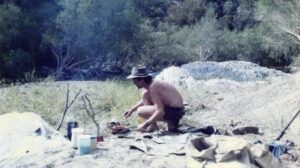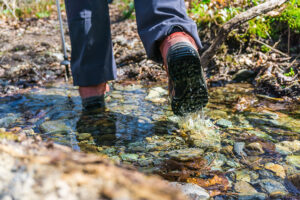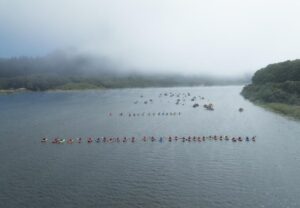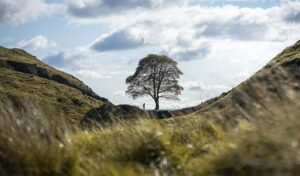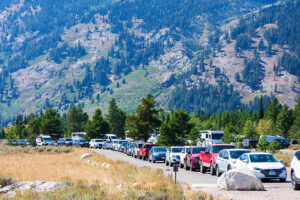BY PAT MORROW
“An aversion to the beaten track is evidence of an independent intellect.” — Bill Tilman
In the mid-1970s, I began my adventure photojournalism career unwittingly selling out wild places by publishing climbing and skiing stories. I assumed that spreading the love about these largely unknown gems would help protect them. It seemed that threatened/sacred/secret places would stand a better chance at survival if the public learned about and championed them than if they were to remain hidden.
Since then, wildlife populations worldwide have plummeted nearly 70 percent, due almost entirely to the loss of habitat brought on by the double whammy of overpopulation and consumption.

Tourists cram a walkway at Iguassu Waterfalls National Park, Brazil. Photo: Shutterstock
Industrial tourism & adventure travel: No diff anymore
There are many ways that the media – digital, social, and analog — have increased pressures on the environment by promoting industrial tourism (1.1 billion travelers) and adventure travel. The fact is, the previously distinct lines between these two modes of travel have all but merged, as the standards for what constitutes true adventure have fallen.
The northern Indian region of Ladakh opened to tourism in 1974. When I did my first backcountry trek there in the early 1990s, the number of domestic tourists was almost nil.
Then in 2009, 3 Idiots, a Bollywood film about a trio of engineering students chasing misbegotten dreams of adventure, launched Ladakh into the public imagination. The year before the film’s release, 400,000 Indian tourists visited Ladakh – already a sizeable figure for a high-altitude desert plateau that is home to just 200,000 people.

The author and his partner had permission to travel the quiet shore of Pangong Lake, Ladakh shortly before it officially opened to Westerners in the early 1990s. Photo: Pat Morrow

Today, tented tourist camps offer a luxury stay on Pangong Lake. Photo: Shutterstock
Three years later, those figures had almost quadrupled. It’s even worse today. Outsiders outnumber residents during peak summer months. Ladakh’s fragile ecosystem and its centuries-old Tibetan culture are fast approaching a breaking point.
In the summer tourist season, 300 to 600 cars a day visit Pangong Lake, at 4,225m. Each car buys anywhere from four to eight single-use plastic bottles. These are either discarded by the roadside or find their way into overflowing landfills.
Off-trail destruction
Some take their vehicles off-road, roaring across the surreal moonscapes that Ladakh has become famous for — vast, sandy hollows of land eerily lacking signs of life… save for tire tracks that will last an eternity.
Likewise, those Red Bull athletes in mountain bike huck films that celebrate the shredding of arid hillsides in Nepal’s Mustang region and Axel Heiberg Island in the Canadian High Arctic to the beat of rock ‘n roll music.
In 2015, Canadian pop music icon Justin Bieber made a video in a pristine Icelandic canyon. The video has been watched more than 440 million times on YouTube since Bieber cantered across delicate mossy vegetation and splashed about in the river flowing through the canyon.
Icelandic environmental officials have had to close off Fjaðrárgljúfur to protect it from the hordes of Bieber fans determined to visit the site. But these fans are not letting a few fences, signs, or park rangers keep them away.
Not only is environmental degradation a highly visible byproduct of social media, but SM has also helped erode the raisons d’être of those who depend on their livelihoods to post while in the field.
The blog comes first
In 1973, Richard Bangs, a co-founder of Sobek Expeditions, one of the first adventure travel companies, made the first descent of the Omo river in Ethiopia. Many years later, he and his teammates returned for a nostalgia trip. On all his early expeditions, Bangs and his companions looked forward to finishing the day drinking wine and swapping stories around the campfire.
But on this journey, the seasoned adventurers had a perfunctory debriefing session over their evening meals, excused themselves, and dove into their tents to prepare blogs for uploads.
This brought to mind a film shoot I was on in the Baltoro region of the Karakorum in 1999. This was at the peak of the Kargil conflict, one of the countless skirmishes in the zero-sum, decades-long geopolitical war at the headwaters of the Siachen Glacier. We met some old climbing buddies fresh off establishing a new route in the Trango Towers, in the era when primitive satellite technology first allowed for uploads of digital spray from professional adventurers. They sheepishly admitted that the daily demand to feed the electronic rat interrupted the flow of climbing. The experience turned into a rivalry that nearly ruined their friendships.
Over-tourism
Nor is traditional print media exempt from contributing to “over-tourism”, which is defined as the congestion from an excess of tourists that negatively influences both citizens’ lives and the quality of visitor experiences. While most residents and visitors see this as a mere annoyance, the impact on the environment is and should be of much greater concern.

By the late 1970s, graffiti had already begun to appear in Antelope Canyon. Photo: Pat Morrow
Slot canyons: a cautionary tale
Long before canyon country on the Colorado Plateau in Arizona and Utah was “discovered” by modern-day adventurepreneurs and Instagrammed nearly to death, I roamed those slots and badlands with a couple of dirtbag adventure friends, gathering material for what eventually became Searching For Tao Canyon. The pictorial book chronicles a decade of exploration in the subterranean world of the American desert.
Art Twomey, Jeremy Schmidt, and I gave each of the 30 canyons in the book the pseudonym Tao (“The Way” in Chinese), in part to protect the delicate fluted sandstone features and the cryptobiotic soil crust. Once compacted, cryptobiotic soils take decades to recover.
We meant it to be more of an archetype than an actual place — an idealized canyon of the mind.
We wanted to inspire others to strive not just for a selfie but to search for the very soul of canyon country.
Earlier than the rest of us, Art Twomey understood the risk of telling people. He knew how easily the desert landscape could be damaged even by a careful person. Whenever someone asked him exactly where these great places were, he always answered, “I found it on my own, so can you.”
Guidebooks
During our 10 years of annual visits to canyon country (1975-85), we met a mere handful of other hikers and only one other pro photographer. Gradually, more photographers and writers turned up. Then guidebooks appeared, serving up a paint-by-numbers experience to newcomers.
On a return visit to the Southwest just before COVID, Jeremy and I revisited some of our old haunts. Many are still wild and unchanged. But one in particular, Antelope Canyon, has become a world-famous commercial attraction. A line dance of awe-struck visitors files through it every day for seven months a year. Demand is so strong that the number is capped at 1,500 visitors per day, and reservations must be made far in advance.
Among the FAQs on one of the Antelope Canyon tour operators’ websites, my faves: “Will I get sand on me?” “I am pregnant, can I join the tour?”

Will I get sand on me? Tourists in Antelope Canyon, 2018. Photo: Pat Morrow
The Serengeti of the North
I live in the Rocky Mountain Trench, between Kootenay National Park in the southern Canadian Rockies and the Purcell Range, the orographic home of that climber/skiers’ mecca, the Bugaboos. In my neck of the woods, over-tourism plays out through the punishing increase of self-propelled and motorized visitors to the backcountry. And social media worsens the problem.
I was born in this Trench, living off the bounties of hunting, fishing, and foraging with my family till my teen years. It was an era when its wildlife assets earned the East Kootenay region a reputation as the Serengeti of the North. I have a pretty good idea of what has been lost in the way of biodiversity, particularly in the past couple of decades.

Tire tracks in a wild British Columbia bog. Photo: Pat Morrow
The most egregious example of social media-induced abuse is when footage of invasive recreational activities appears online, as a kind of invitation to follow suit. Jerky video shows 4x4s and quads churning through wetlands with big knobby tires or shredding delicate native grasses, paving the way for invasive weeds to take root.
One of the most offensive is a clip of a high-powered snowbike planing — in summer — across the shallow headwaters of the Columbia River, adjacent to the federally protected Columbia Wetland Wildlife Management Area. Apart from dopamine-induced posts like this, the only other significant use of SM by these groups is to engage in turf wars with other users over access to the backcountry.

Vehicle damage on a lakeshore in British Columbia. Photo: Pat Morrow
Geotag, and others will follow
The East and West Kootenay regions of southeastern British Columbia have been lacerated by 100,000km of backcountry roads (mostly logging but some mining as well). These roads allow multitudes to access previously secure habitats.
Apart from the havoc wreaked by the largely unregulated resource extraction industry, media that celebrates mass recreational activities in vulnerable, geotagged wildlife havens exacerbates the threat to wild creatures. Where the bipeds play, so too the quadrupeds.
Even a single person has an impact. In the Trench, for example, you can’t even go for a stroll or paddle in the wetlands during the critical migratory bird nesting period without scaring birds off their eggs or fledglings, alerting ravens to the location of the nests.

Kootenay’s 100,000km of backcountry roads.
A lost connection
It’s understandable that most of us have little or no connection to nature. By 2030, 70% of the world’s population will live in cities. We have lost the DNA necessary to sense that our mere presence in the wild is enough to force animals like mountain goats, elk, moose, wolverine, and many bird species off what little intact habitat remains.
Think of it as unintentional human hazing of wildlife, much the same as a border collie is despatched to move elk and deer away from townsites, or a Karelian bear dog helps decondition a “problem” bear.
I go to the mountains to get away from crowds, to forest-bathe my worries away and savor a time when the earth’s life support system wasn’t on triage.
The upside of SM? The ability to raise our consciousness about the climate emergency and the plights of the last remaining black rhino or Amur tiger. But if we’re not mindful, it’s a place where our seemingly innocuous weekend warrior posts can act like an arsonist’s accelerant.
ABOUT THE AUTHOR
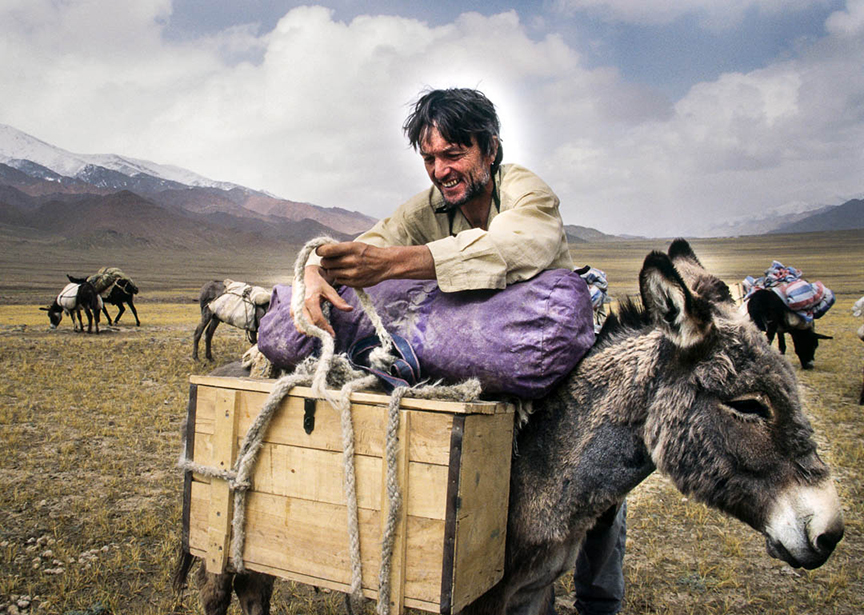
Pat Morrow’s photographic career took off when he scaled Mount Everest in 1982 as the official photographer for Canada’s first expedition to that mountain. Several years later, he was first to complete the climbers’ version of the Seven Summits (which considers Carstensz Pyramid to be the highest and most worth climbing objective in Australasia).
In the early 70s, Pat joined forces with local environmental activists to help establish the Purcell Wilderness Conservancy. Since 2009, Pat has been chairman of the Conrad Kain Centennial Society, which was formed to celebrate the nature-loving legacy of Canada’s premier pioneer mountain guide, Conrad Kain.

